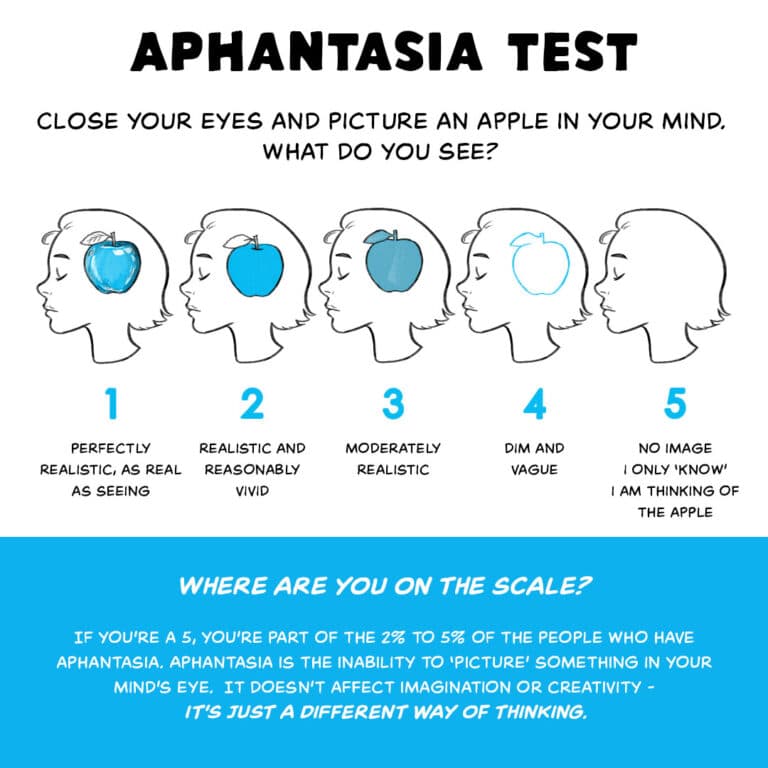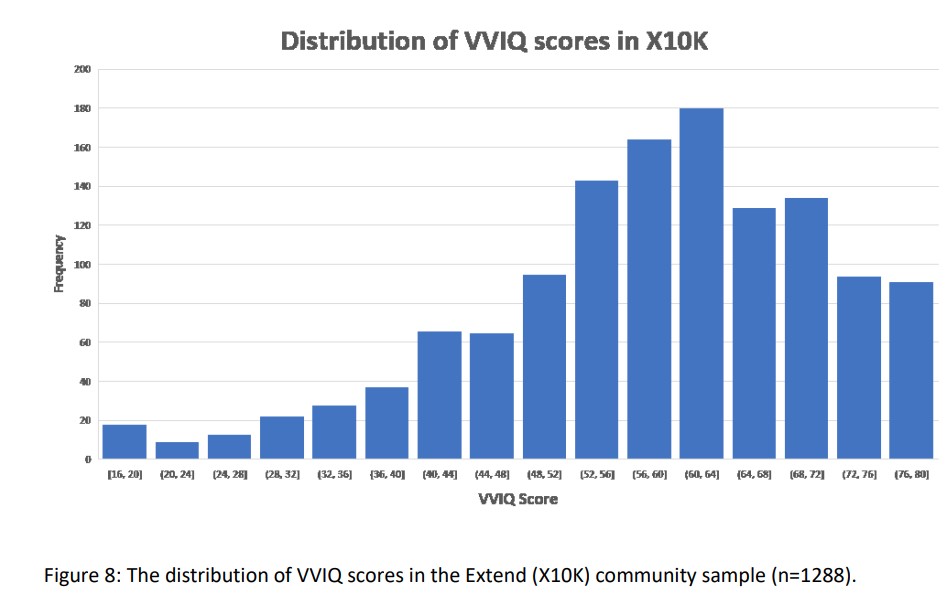The Heterogeneity of Reading Experiences
Did you know that a small minority of people are unable to imagine anything at all while reading? They do not form pictures in their heads and some don’t even have an inner voice narrating the text. This is called aphantasia. A study published in 2022 puts the prevalence of severe visual aphantasia (i.e. no mental imagery at all) at 0.6%-1.0%, while 3.6%-4.2% have some visual imagery that is usually ‘vague or dim’. Meanwhile, another study found that 82% of people with visual aphantasia also had auditory aphantasia.
But would a lack of visual imagination affect the reading experience? Scientist conducted an experiment where they attached electrodes to a person’s fingers while they were reading scary stories in order to measure the conductivity of their skin. This is because skin conductance generally increases in response to frightening stimuli, including imagined ones. What they found was that people with visual aphantasia showed a decreased response to scary stories when compared to the control group. And to confirm that it was the visual aphantasia that was causing this and not of a general inability to feel frightened, they did another experiment where they showed scary pictures instead of stories and could not find a difference between the two groups.
For some reason, I don’t find Stephen King’s stories scary at all. I’ve read plenty of horror and I usually don’t feel a thing. The only book that made me look under my bed was James Herbert’s The Rats. Even so, I only looked for imaginary rats for a few days, but I was afraid of looking at televisions and mirrors for weeks after watching Ring, the Japanese version. Perhaps I’m on the lower end of the visual imagination spectrum like those people who only got scared from looking at scary pictures? The good news is that there’s a test, the Vividness of Visual Imagery Questionnaire (VVIQ), that I can take to find out. The bad news is that it is a multiple-choice self-report questionnaire, and as such is prone to over or underestimation of what the different options mean. I thought that my imagination was ‘dim and vague’ until I saw this:
It turns out that my visual imagination has been ‘moderately realistic’ all this time, perhaps even ‘realistic and reasonably vivid’. So why don’t I feel scared when I read horror?
Maybe it’s because I often imagine the wrong thing. Take this passage describing a cat in Catriona Ward’s The Last House on Needless Street for example:
She looks at me with those yellow-green eyes then pads away.
Now, what I see is a black cat, probably because there’s a black cat on the cover, with yellow eyes. I cannot imagine what yellow-green looks like. I even went to google “yellow-green cat eyes” a few months back when I first read this passage but I can’t picture it anymore.
Here’s the description for Dracula’s castle in Bram Stoker’s Dracula:
Suddenly, I became conscious of the fact that the driver was in the act of pulling up the horses in the courtyard of a vast ruined castle, from whose tall black windows came no ray of light, and whose broken battlements showed a jagged line against the moonlit sky.
Even though the text mentions that they are in the courtyard of a ruined castle, what I imagine is a carriage drawn by a single horse before a bridge leading to the castle with pristine spires. Notice that there are no windows, no jagged line against a moonlit sky, and I have no freaking idea where the bridge came from.
As for character descriptions, I usually just skim through all of them. How am I supposed to know what a ‘hawkish nose’ or a ‘long chin’ really looks like? And when American authors say ‘seven feet’, I am too lazy to pick up a calculator to see what that is in metres. Even if I did find out how tall that is, it wouldn’t make a difference as I would fail to picture it anyway. In lieu of the author’s descriptions, every character in any book is some version of me, ‘vague and dim’ enough to be male or female, young or old, to be anything the story requires.
I wonder how many readers are like me? In the book A Passion For Specificity: Confronting Inner Experience in Literature and Science, scientists did an interesting experiment where they asked two readers to report on what was going through their consciousness while reading Franz Kafka’s The Metamorphosis. One of their reports was while they were reading the following passage:
He was especially fond of hanging from the ceiling; it was quite different from lying on the floor; he could breathe more freely; his body had a light swing to it; and up there, relaxed and almost happy, it might happen that he would surprise even himself by letting go of the ceiling and landing on the floor with a crash.
One of the readers imagined a foot-tall bat (i.e. 30cm for the rest of the world) hanging from the ceiling over a bed with white sheets. She didn’t see anything else in the room except for a window off to the right, the only source of light in this scene. This is even though she knows that the character in the story is actually a bug and not a bat.
Looks like I’m not alone when it comes to imagining whatever the hell I want regardless of the text. Strangely enough, what I imagined when I was reading her description of what she saw was not a small bat but a giant man-bat, like some of the more beastly depictions of Dracula, hanging over a metal bed that is covered with a white bedsheet, but no pillow nor duvet, in a room with a wooden floor and slanted ceiling that is like those in an attic, slanting downwards to the right where the window is. But this image doesn’t make any sense. I have no idea where the bat is hanging from as I don’t see any rafters, and the window should be behind the bed instead of to the right where there wouldn’t be any space for a window due to the slant.
Despite imagining nonsensical things which ignore the text, where do I fall on the spectrum when it comes to visualising what is being read? As far as I know, there hasn’t been any studies looking at this. How would one even quantify this in the first place? But I’ve got a feeling that I’m on the lower end, definitely below average. Then again, only a minority of the population reads fiction. According to the 2017 Survey of Public Participation in the Arts, only 42% of American adults have read a novel or short story in 2017. I’ve got no idea what that figure is elsewhere in the world but it is probably similar? So, while I might be below average among readers, there is a possibility that I’m above average when considering the general population.
The VVIQ has 16 questions, with each question having 5 possible responses. The ‘no image at all’ option has a score of 1 while the ‘perfectly clear’ option has a score of 5. This means that people can score 16 to 80 points on the VVIQ. A 2020 study had 1288 people complete the questionnaire and found that 0.7% scored 16 out of 80, while 2.6% scored 80 out of 80. Meanwhile, 2.6% scored 16-23 out of 80 while 11.2% scored 75-80 out of 80. The median score was 60, which means that the average person would probably reply with the fourth ‘realistic and reasonably vivid’ option to most of the questions. This study also has a handy graph detailing the distribution of VVIQ test scores.
Since I would have answered all 16 questions with the third ‘moderately realistic and vivid’ option, I would have scored 48 points, which puts me at the centre of the graph but below the peak of the curve. But the fact remains that even though I’m slightly below average, I don’t care about descriptions at all! How many other readers are like me? Do most readers not care about descriptions?
But the more interesting question has to be: How many authors are like me? The first author I came across that wrote with minimal descriptions was Kurt Vonnegut. I remember being wowed, thinking that this was someone who wrote how I read. Other than him, a lot of bizarro authors cite him as an inspiration so a lot of bizarro books are kind of my jam as well. Still, it seems like there aren’t a lot of authors that write with minimal descriptions.
But do descriptions matter?
To find out the answer I wrote an entire book, Samurai Barber Versus Ninja Hairstylist, where the only description of the main character is this:
Each strand of the Samurai’s hairstyle had been groomed to take its rightful place, each strand supporting other strands that had been laid on top of it until tāde hair took the shape of a horn, a majestic monument to tāde great barber skill.
As far as I know, after reading all the reviews posted thus far, no one has complained about not being able to visualise what the Samurai Barber looks like, even though that description only appears 19 pages into the book. I wrote that not caring about whether it made any kind of visual sense, so I’m really curious as to how people visualise the Samurai Barber. But then again, only a minority of people post reviews, so maybe most people who read it had trouble getting into it or found it confusing.
Do descriptions matter? It doesn’t matter to me. I don’t care for them. I come up with my own visual imagery despite the descriptions. As for writing them, it’s not like I can change how I write anyway. I can only write how I write because of how I read. But how many people do care? Do you care about descriptions? Let me know in the comments.

